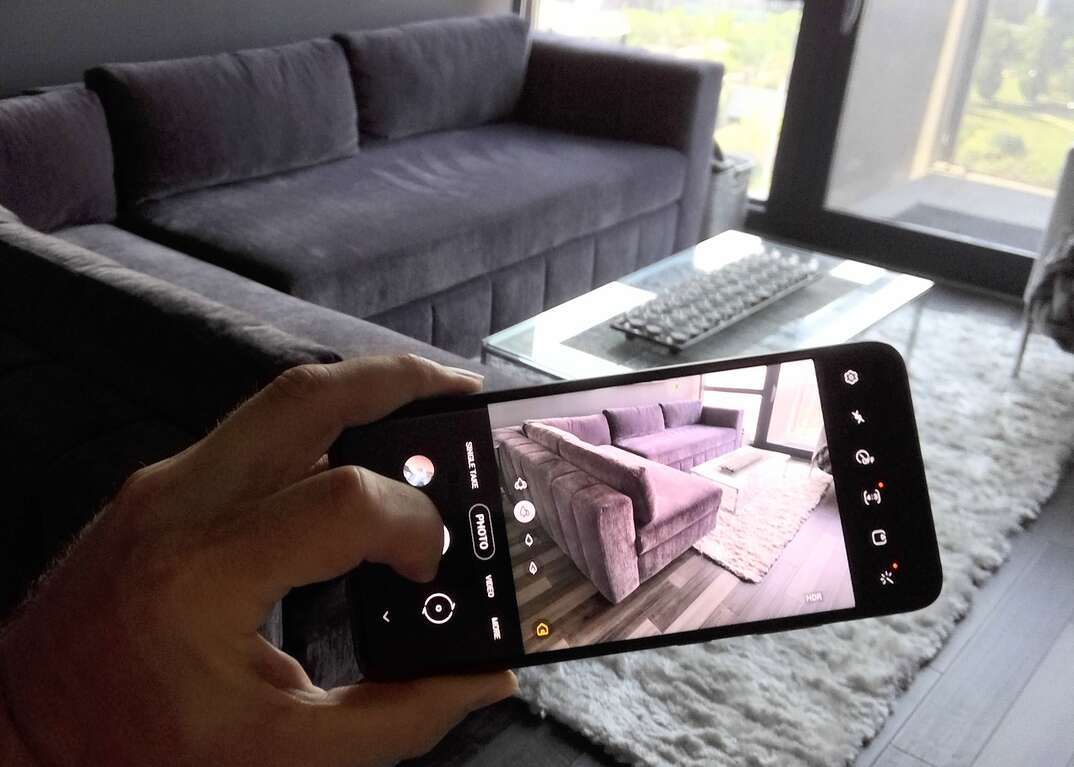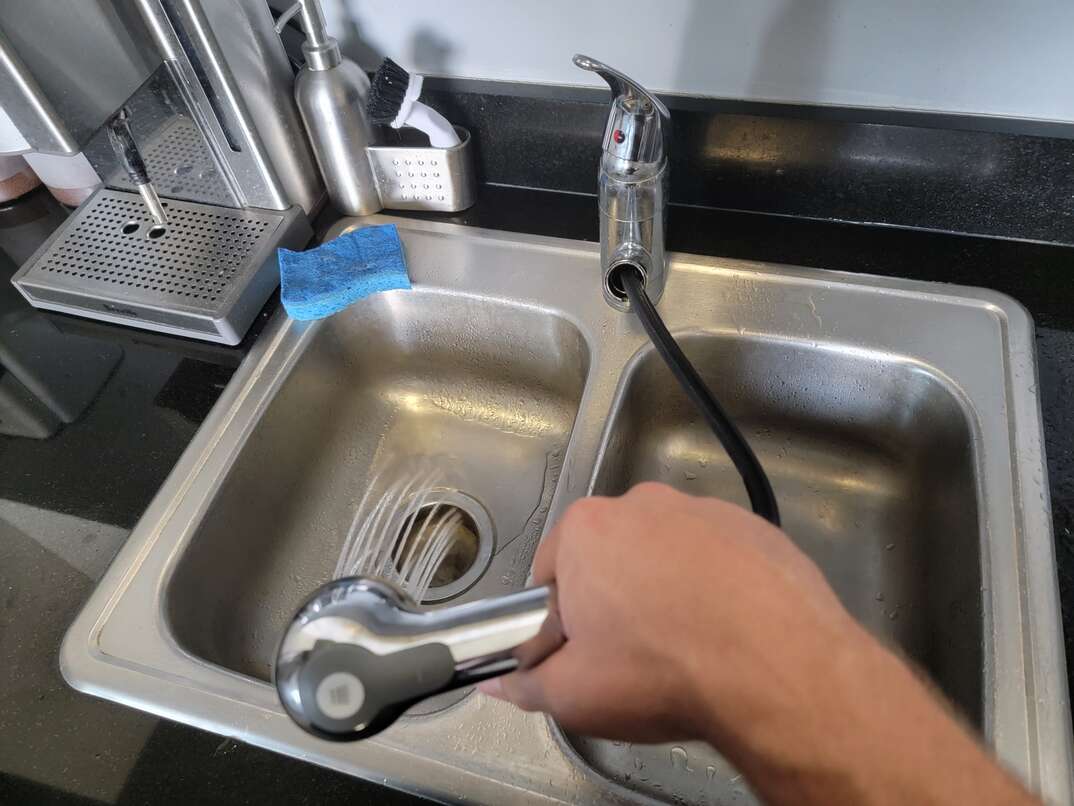How to Fix a Hole in the Wall like a Pro

When you yank out a nail too quickly or trip while carrying a piece of furniture, it's really easy to accidentally put a hole in the wall. With the right tools, you can easily learn how to patch a hole in the wall in minutes.
Safety First
There are a few safety precautions to keep in mind before you get started. First of all, always wear protective clothes, gloves, goggles, and a mask when handling drywall and other wall rebuilding materials. If your home was built before 1978, test the wall paint with a lead test kit. Some walls may have lead paint that can be potentially dangerous. Finally, use a stud finder to check for electrical wires. Always turn off the power before working in an area with wires, and avoid cutting or piercing any of them.
How Do You Fix a Hole in the Wall?
When you're upgrading your home, learning how to patch a hole will help your walls look smooth and flawless. The exact method for how to patch a hole in the wall will vary depending on how big the hole is.
Small Holes
When the hole is fairly small, around an inch or two in size, you can follow these steps to fix it.
Prepare the area: If the hole has rougher edges, gently sand them away and wipe off dust with a damp rag.
Cut your reinforcing patch: For a hole in drywall that is more than half an inch in size, use a small piece of reinforcing mesh. You can find these in plastic, fiberglass, and metal. Cut the patch so that it is an inch larger than your hole on all sides.
Place the patch on the hole: Most patches have an adhesive backing to stick them on over the hole. If yours does not have one, just use a small dab of spackle or drywall compound to hold it in place temporarily.
Cover: Use a putty knife to evenly smooth spackle or drywall compound over the hole and patch. Make sure the compound expands at least an inch past your patch.
Let it dry: Most compound takes eight hours to dry thoroughly. Read the manufacturer's instructions on the label to see when yours will be dry.
Sand it: Sand down any rough spots until they look smooth. Take extra care around the edges, lightly feathering them with a very fine grit sandpaper.
Prime and paint: Apply primer, and then add a few coats of matching paint to finish the repair.
Medium Holes
To learn how to fill holes in the wall when they're at least a few inches wide, use a method called the “California patch.”
Cut your drywall patch: Cut a piece of drywall into a square 2 inches larger than your hole on each side. Use a drywall knife to score the drywall an inch from the edges of the patch without tearing the paper. Snap off the gypsum while leaving the inch of paper backing in place.
Cut a hole in the wall: Put your drywall on the wall as a template and trace around the square. Cut the matching square in the wall.
Use joint compound to attach the drywall: Place joint compound on the paper as a glue, and then press it into the hole in the wall.
Cover the patch: Use compound to smooth over the patch. You may need two coats. Make sure you let it dry properly between coats.
Finish: Sand the drywall compound smooth, prime it, and paint it to finish off your repair.
Large Holes
Here's how to cover a hole in the wall if it is bigger.
Cut your drywall patch and prep the area: Cut a piece of drywall that is at least 2 inches larger on every side than the edge of the hole you need to fill. Then, use that piece as a template to trace a square around the hole in the wall. Cut your drywall along this outline.
Apply bracing strips inside: Cut two one-by-two pieces of wood slightly longer than the width of the hole. Put them inside the hole and hold them in place. Screw from the outside of the hole into the end of each piece of wood with a drywall screw.
Attach your patch to the bracing strips: Put the piece of drywall into the hole and use a few more screws to attach it to the anchor board.
Apply joint tape: Put some joint tape over each border to strengthen the bond and prevent cracking.
Cover with joint compound: Use joint compound to cover the patch. Wait for the compound to dry, and then sand it completely flat.
Finish: Prime and paint the area to finish your repair.
How to Cover Nail Holes in a Wall
Because they're so small, these are super easy to repair during basic home maintenance. According to Lowe's, hole in wall repair for a nail hole just requires a minute or two of labor.
Prep the area: Use a small screwdriver or utility knife to gently knock away any loose debris.
Spackle: Apply spackle to fill the hole and use a putty knife to smooth it out flat.
Let dry: Wait the manufacturer's recommended amount of time for your spackle to dry.
Sand it smooth: Use a fine sandpaper of 120 to 220 grit to flatten out the spackle.
Paint over it: Apply paint to match the surrounding area.
How to Patch Textured Walls
When patching a textured wall, you can start by following the same basic process for how to repair a hole in the wall that we outlined above. However, the final finishing step is a little different because you need to match the existing texture. Depending on the type of texture you have, you have a few different options for re-creating the existing texture.
Most methods involve applying wallboard compound to add texture to the area. You can just roll it over with a long-nap roller to get the standard orange-peel look. You can also get creative with a putty knife, smoothing, slashing, and poking the wallboard compound to get a similar look. Home improvement stores also have kits to touch up common textures like splatter and knockdown. For larger areas, you may want to try using a spraying gun that can be set to apply textures like popcorn or knockdown.
How Do You Use Spackle?
Finally, here are a few final tips on handling a damaged area in your wall. Spackle is a great tool, but it can take a little time to get used to it. Try to use fresh spackle since it is harder to work with when dry. You can also add a little water to help even out dry spackle. Use a flexible, metal putty knife to put the spackle on the wall. Start by applying a glob on the knife. Hold the knife's surface against the wall above the hole, and then drag it smoothly down the wall. Feathering the edges will ensure you just need a light sanding to hide them.
With a little know-how, the average homeowner can tackle patching even large holes in the wall.
Being prepared for life’s unexpected home repairs is important. That’s why having a plan from HomeServe can help. With a plan in place, you call our 24/7 repair hotline and we will schedule a repair with one of our approved technicians to get the job done. See what plans are available in your area.




